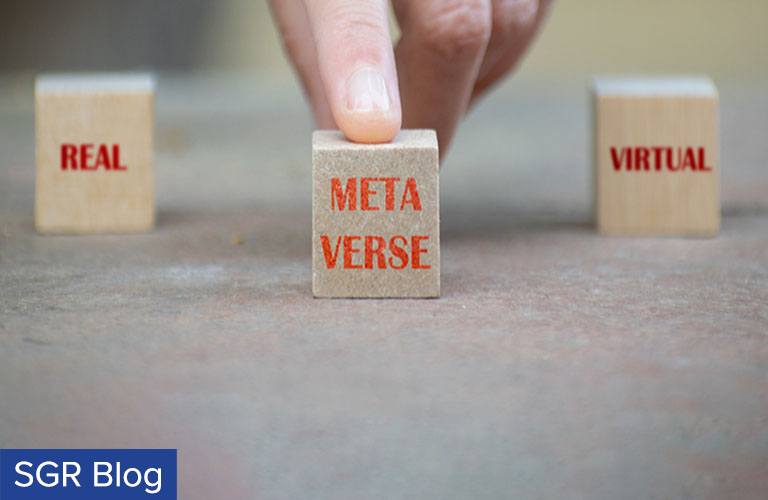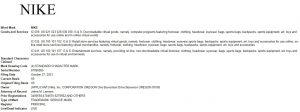
It appears that the next commercial frontier is the so-called “metaverse.” The term “metaverse” was first used in science fiction novels. It combines the word “universe” with the prefix “meta,” which comes from a Greek word meaning “beyond.”[1] In the technical sphere, the “metaverse” is some form of a virtual universe that is the style being defined. Several technology and gaming companies have entered the fray of defining what this metaverse will be. An American writer, Neal Stephenson, referred to his idea of the metaverse in his 1992 science-fiction novel Snow Crash. Stephenson envisioned an immersive virtual world where people can meet, work and play using connected devices such as virtual reality (VR) headsets, video gaming consoles, and augmented reality technology.
Both Roblox and Fortnite provide users with interactive virtual worlds where countless avatars of human users can play games, chill, or even attend “live” music concerts. Roblox and Epic Games (the developer of Fortnite) are investing in the user experience of their version of the metaverse by offering a virtual version of real-life events and updated customization of avatars. While we were locked away in our closet-shaped offices, these platforms provided millions with an outlet to connect with each other when connection and proximity were the subjects of concern. But, it doesn’t stop at gaming and virtual concerts. What about conferences? Many work-from-homers have been remarking of “Zoom-fatigue” or another, highlighting that video conferencing meets a need, but it cannot replace in-person collaboration. Enter the metaverse.
At the same time, we are witnessing another seismic shift from tangible to virtual – in the nonfungible token (NFT). An NFT can be thought of in simplest terms as a digital self-authenticator. Whatever digital asset is attached to this token will be immutably married to a unique address. With the use of encryption keys, these tokens and digital assets may be signed and transferred. A private crypto key is proof of ownership of the original digital asset. The public crypto key of the creator of the digital asset operates as a certificate of authenticity for that digital asset. In other words, with these keys, one may easily prove they own the original digital asset. Some argue this is the end to counterfeit digital goods.
As technologists move to define and develop exactly what the metaverse or metaverses will be and what digital assets will be traded in this metaverse, several IRL (in real life) companies are making moves to ensure their brands are protected in this virtual world.
- Facebook announced its corporate name change to Meta.
- Baidu applied to register the trademark METAAPP under scientific instruments and design research.
- Gaming giant NetEase has also filed dozens of trademark applications related to the metaverse, including “NetEase metaverse,” “Fuxi metaverse,” and “Leihuo metaverse.”
- Alibaba filed for trademark registrations, including “Ali Metaverse.”
More than 400 companies in China have registered trademarks for terms related to the metaverse so far.[2] And, it’s not just about META marks. Companies are filing applications to register marks for virtual goods and services that may exist in the NFT or metaverse space.
Nike, Inc., for example, recently applied for registration of their NIKE mark and JUST DO IT mark in classes 9, 35, and 41 – notably for computer game programs featuring virtual goods, as well as, protection of virtual services for use in online virtual worlds. An important point of emphasis is protecting a broad array of entertainment services protecting online non-downloadable virtual items.


Other brands are jumping into the virtual space, with Dolce and Gabbana announcing it had sold at auction a nine-piece collection of digital NFTs, or nonfungible tokens, alongside some actual couture for a total of 1,885.719 Ether (Ethereum cryptocurrency), or the equivalent of nearly $5.7 million.[3] Burberry and Louis Vuitton have embraced this virtual environment by offering in-game assets to users.[4]
There is no denying that the virtual environments embodied in NFTs and the metaverse are garnering the attention of consumers and brands alike. But, from a purely trademark perspective, what are best practices?
Fortunately, the United States Patent and Trademark Office (USPTO) has been at the forefront of identifying how to protect these types of Intellectual Property. As early as 2007 the Nice Classification system, and later, the USPTO, identified areas of protection for Virtual Worlds with the descriptions “entertainment services, namely, providing virtual environments in which users can interact for recreational, leisure or entertainment purposes.” This specification is interesting for classification purposes alone.
The virtual environment was designated as a place for entertainment and, as such, was designated as a service in Class 41. Moreover, around the same time, the Classification bodies identified that the “creation” of the virtual environment/virtual world and the “programming” of these environments are protectable as computer services in Class 42. Class 41, as an education and entertainment service, and Class 42 as computer programming and computer services, remain vital protection areas to this day and will likely do so for many years to come. These areas mark two of the most vital areas of protection for virtual creators and virtual consumers.
This raises an interesting question for protection. Are virtual goods protectable as goods? By definition, it would seem not. Goods and products are tangible items. Virtual goods are intangible. Fortunately, the governing International Classification bodies identified a path to protection for virtual items. Consistent with the early 2007 decisions, these “virtual goods” are protectable, not as tangible items but as forms of virtual entertainment. To protect these areas, the following specification was developed, “entertainment services, namely, providing online, non-downloadable virtual goods, e.g., clothing, pets, furniture, etc., for use in virtual environments created for entertainment purposes,” in Class 41.
Clearly, protection of the entertainment services in Class 41 is paramount, and protection of the creation of non-downloadable computer services is important in Class 42. Class 9, for protection of the computer programs, might be important as well, but with the important distinction that the virtual goods are not being directly protected but rather the downloadable computer programs are being protected, and those programs feature virtual items.
So, where are the nonfungible tokens (NFTs)? These items are used as sources of authentication. They are not a product and, by themselves, not a service. The United States Trademark Identification Manual describes that “Nonfungible tokens (NFTs) are maintained on a blockchain and typically represent digital items and authenticate their ownership.” The Trademark Manual identifies NFTs as examples of authenticating other items, not as an individual product or service. Examples are “downloadable music files authenticated by nonfungible tokens (NFTs),” in Class 9; “provision of an online marketplace for buyers and sellers of downloadable digital art images authenticated by nonfungible tokens (NFTs),” in Class 35; and “provision of an online marketplace for buyers and sellers of downloadable digital goods, e.g., art images, music, video clips, etc. authenticated by nonfungible tokens (NFTs),” in Class 35. (emphasis added). Here we see that the NFTs are not protected individually as a product or service.[5]
[1] https://history-computer.com/metaverse-the-complete-guide/
[2] https://www.businessinsider.com/china-big-tech-metaverse-trademarking-terms-netease-2021-11
[3] https://www.nytimes.com/2021/10/04/style/dolce-gabbana-nft.html
[4] https://www.glossy.co/fashion/how-fashion-brands-are-navigating-nfts-and-whats-next-for-the-metaverse/
[5] Albeit the creation of the NFTs are reasonably protectable as computer programming services, if these services are performed by others.

